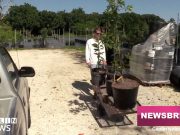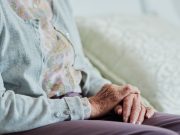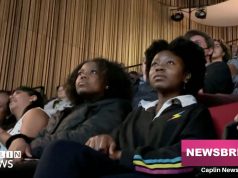On May 31, with a red hot summer just around the corner, a group of 30 to 40 people gathered inside Pentecostal Tabernacle International in Miami Gardens to discuss combating the extreme heat the city is expected to face.
Pauline Sadarriga, the Humanities, Health, and Society Program Coordinator at Florida International University’s medical school, addressed them.
“Extreme heat, especially in Miami Dade, is on the rise,” she said.“It’s really identified as having a heat index over 90 degrees for two or three days. We are experiencing that as residents of Miami Dade, so it’s very important to know its effects on our bodies and mental health.”
The meeting was a part of Miami-Dade County’s long-standing partnership with the CLEO Institute, a Florida-based nonpartisan organization dedicated to climate education, advocacy, and engagement founded in 2010 by Caroline Luis, an early believer of climate change’s many problems.
“She started the organization to bring awareness to people, to let them know about climate change and what they [people] need to do,” said Breatha Howard, the program coordinator at the CLEO Institute.
During the event, Dr. Frederick Anderson, medical director for the Department of Humanities, Health, and Society at FIU and a family physician, described the health risks arising from extreme heat.
He explained that Florida has a particularly high heat index, the measurement of how hot the human body feels when both temperature and humidity are taken to account.
“In Florida, you have this wet blanket of humidity,” he explained. “The sweat doesn’t help you because it just cannot evaporate, and as a consequence, you are actually hotter, and you feel like you are in sweltering conditions.”
This makes Floridians susceptible to illnesses such as heat exhaustion and stroke; it also makes the state a breeding ground for disease-carrying insects that are attracted by heat..
“As heat, or temperature increases, we are more likely to see infectious diseases becoming more common because of the temperature,” Joanne Pérodin, the senior director of climate etiquette at the Cleo Institute, explained.
Pérodin mentions dengue fever and malaria as diseases that might emerge from extreme heat conditions.
Anderson also mentions that certain insects thrive in higher temperatures, especially biting insects like mosquitoes.
To combat these issues , Miami Dade County in December of last year launched the Extreme Heat Action Plan, which includes use of cooling centers, as well as construction of cool pavements and shade structures.
“We just issued the plan during the end of December, so we’re in implementation mode,” answered Miami Dade County’s Chief Heat Officer Jane Gilbert. “We applied to an EPA grant, for instance, to do more shaded bus stops with trees.”
According to Gilbert, the county opened public libraries and park facilities for longer than usual hours this summer so patrons could cool off during the extreme heat; however, the problem lies in the lack of knowledge among residents about these public places that serve as “cooling centers.”
“It’s more important that they know about exposure and different ways to cool off if they can’t access cooling in their home or any other place they are comfortable with,” she explained. “That’s what the cooling center is for.”
Gilbert says that the county mayor and commission also approved funding of $2.5 million for tree planting this past year, along with $1.5 million for restoring and maintaining trees, as part of the plan.
In addition to partnering up with CLEO, the county uses various other methods to inform the public that spaces such as libraries serve as cooling stations to combat extreme heat.
“We put posters in three languages in all libraries and parks, and we also provide them to our manciple partners and our university partners and our community-based organizations,” explained Gilbert. “We have video and radio spots in all three languages going out; we have billboard and bus shelter ads.”
And the county issued heat advisories through texts and emails, which residents can sign up for through the county’s official website.
The county’s primary goal in its heat action campaign is to reduce the health and economic effects of extreme heat.
“There are 19 actions, and cooling centers are one of them,” Gilbert informs. “Our main goal is to inform people about the heat risks and what people can do to combat them during the summer.”
From this campaign, Gilbert hopes to bring comfort to those facing the extreme heat of Miami without a place to cool off.
“I just want people who are at home or don’t have a home suffering from the heat, for them to know that they need to look for their closest library, or park facility or any public space to cool off,” she explained. “Find a place to cool off if it’s becoming unbearable.”
This story was produced by a Caplin News student in conjunction with the Coconut Grove Spotlight.

































